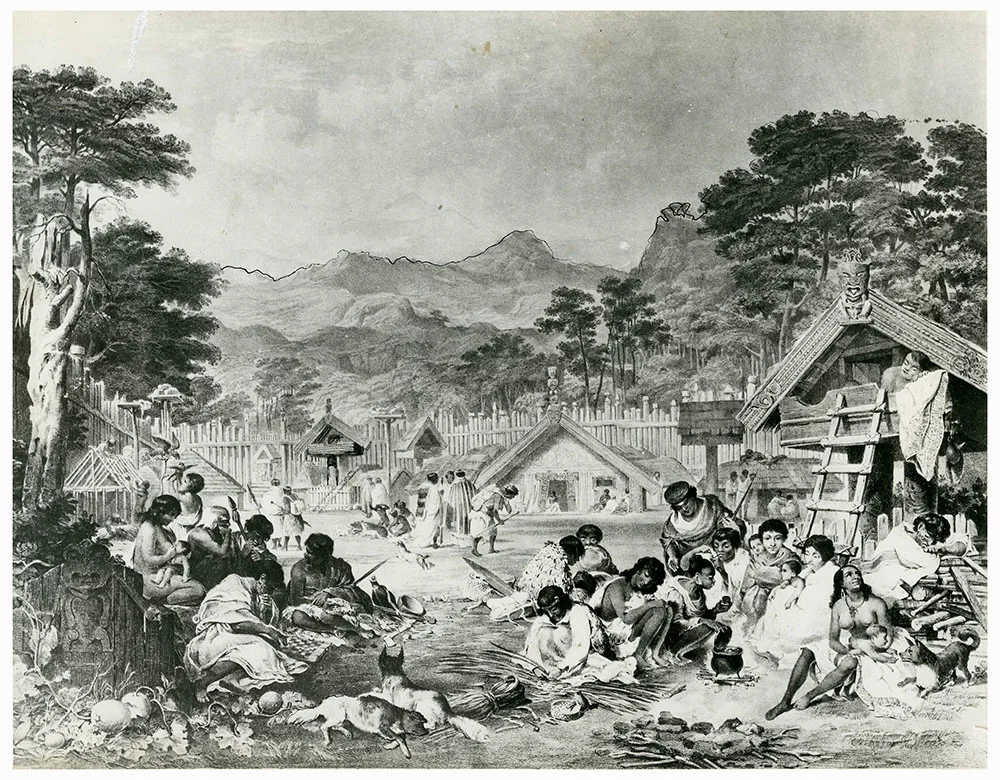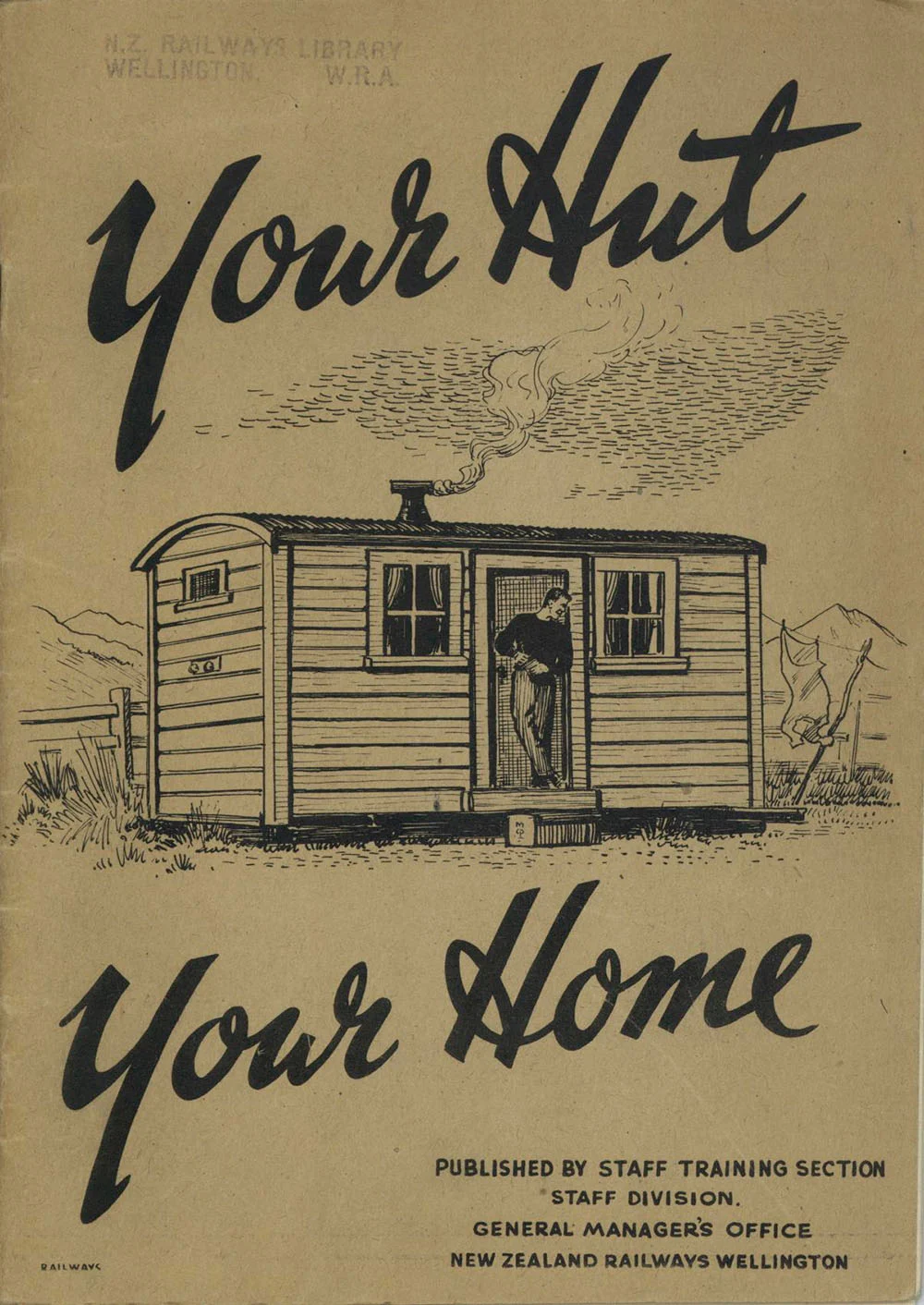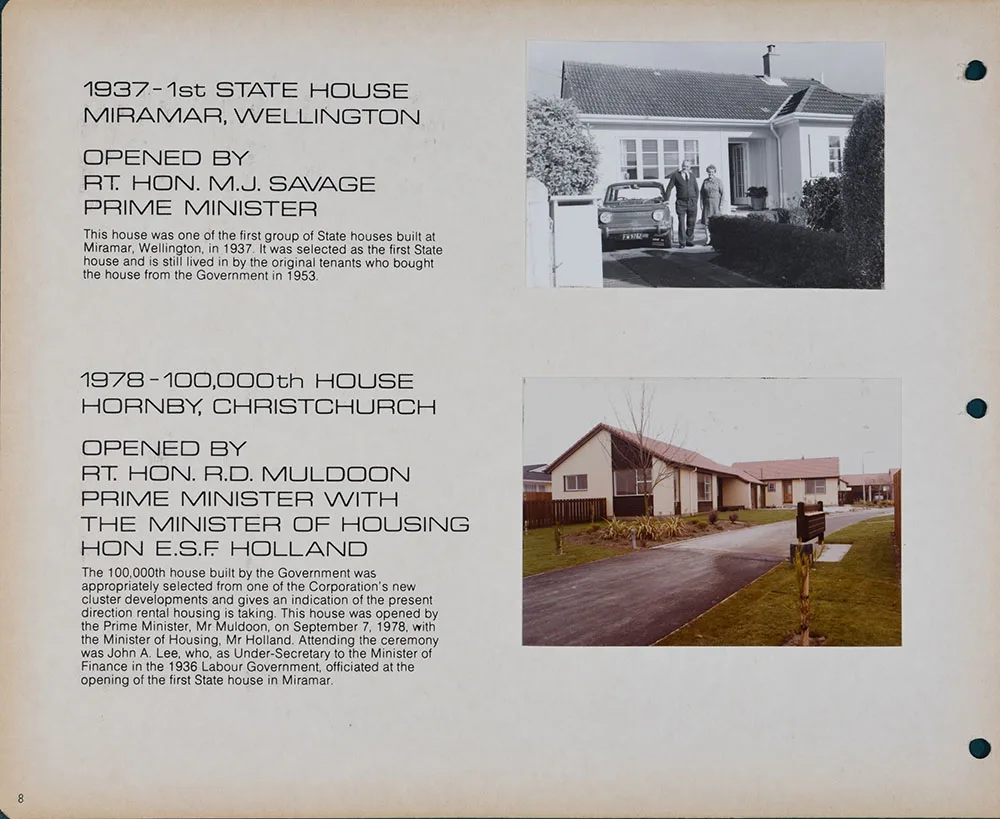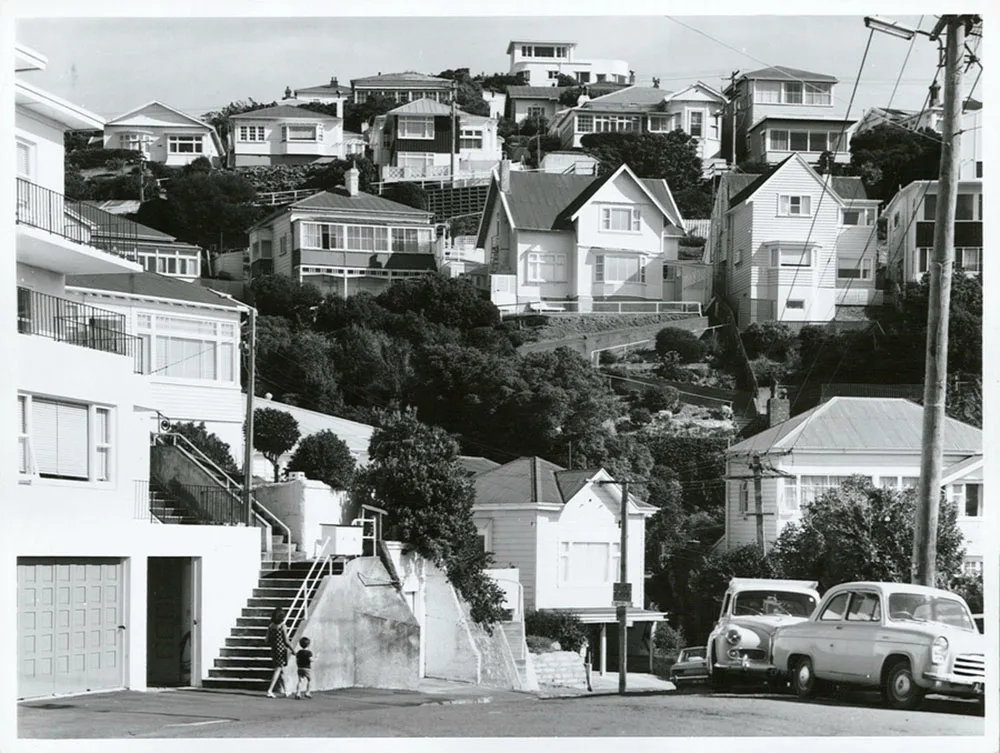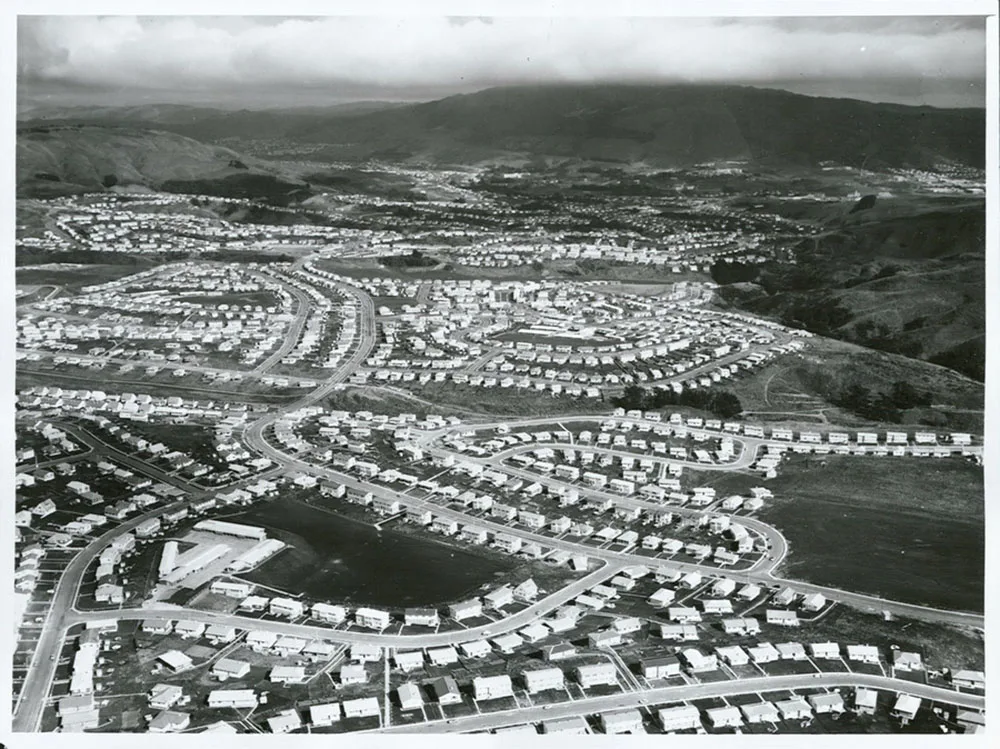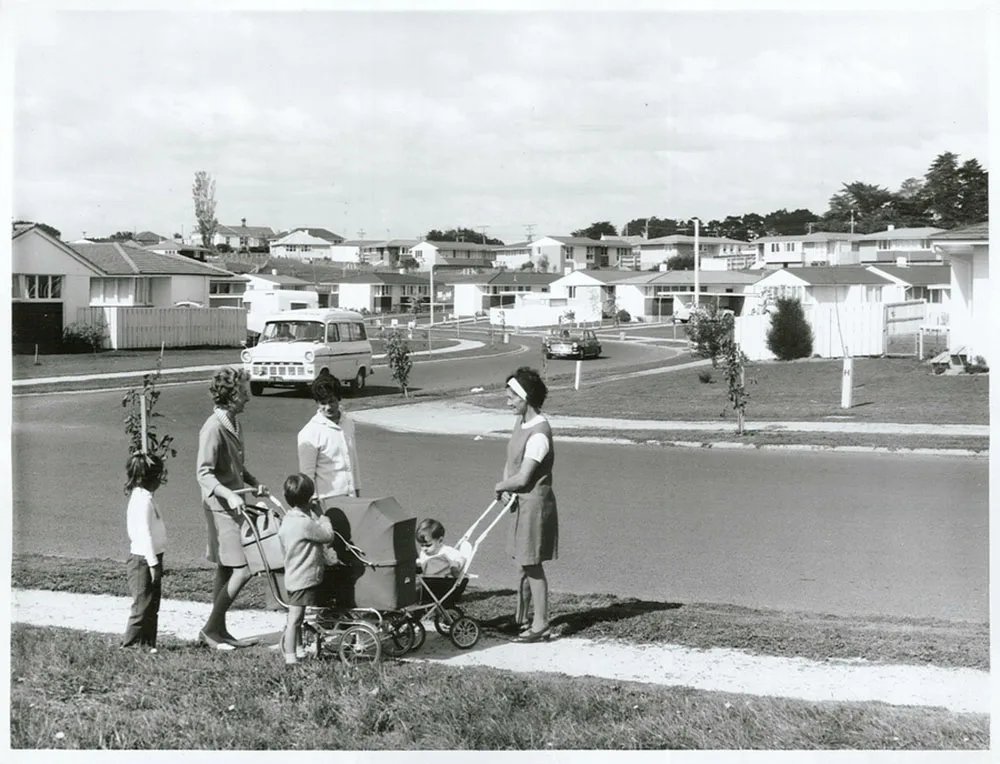Housing in New Zealand
New Zealanders have lived in a variety of shelters, from bungalows to baches, apartments and settler villas to the ubiquitous state house. We hold many images and drawings of New Zealand homes past and present. Throughout the COVID-19 Level 4 lockdown our digitisation team reviewed content previously digitised on our Flickr account. We want to celebrate the places that we call home by highlighting some of these images.
Whare raupō made up a significant part of pre-settler housing as did the iconic wharenui. Whare raupō were made of raupō or reeds over a wooden frame with a thatched roof. Settlers used a similar style of housing when they first arrived. Māori used separate buildings for each task. Different buildings were used for storing food, eating in, socialising in and sleeping in. These buildings were shared in a papakāinga or pā. Early Pākehā settlers built single, all-purpose dwellings. The illustration below of Pūtiki Pa near Whanganui from 1840 shows both the central wharenui and the whare raupō surrounding it. This illustration depicts a picturesque view of everyday life at the pā. It is a replica of a lost oil painting by John Alexander Gilfillan. Marae and wharenui still hold a place of enormous significance for iwi, hapū and whānau and there are many papakāinga all over the country that whānau live in today.
The next record is a booklet entitled Your Hut, Your Home from the old Railways staff library. It was issued to single men working for the NZ Railways, who lived in small huts close to work. With many people over the last few months working from home, and sharing spaces with children, flatmates, partners and wider family, space can feel like a luxury. This record provides guidance on living in small spaces and maintaining a work/life balance. The section on exercise is interesting when compared with the COVID-19 restrictions around living within a bubble. It is recommended that the railway worker spend “[a] portion of each day in the fresh air... Keep away from the job. Your hours on duty are generally long enough in themselves”.
The massive state housing programme of the first Labour Government of the 1930s focused on the construction of detached or semi-detached dwellings. Over time rising costs, population growth and decreasing availability of land saw more ‘town house’ style dwellings and elevated flat blocks constructed.
Central government has not been alone in ensuring New Zealanders have a roof over their heads. Local councils, iwi and community organisations have often stepped in to provide for people in need. The images below show some of the iconic original state houses as well as other social housing developments and styles.
Increasing populations and urbanisation led to greater demand for housing in cities and towns. From the late 1800s through to the early 1900s this meant fitting houses into small and precarious looking positions. This photo of Wellington’s Mt Victoria with its perched villas is one such example. With space in the inner city at a premium, cities and towns began to spread outwards. New suburbs and subdivisions sprang up and continue to spring up all the time. This aerial shot of Porirua East from 1969 shows a brand-new community beginning to expand.
Not all of us live in busy cities or town centres. Farmers, workers and those seeking the quiet life call some isolated, wild places home. This photo of Pencarrow Lighthouse and the lighthouse keeper’s residence, now easily accessed by Wellingtonians, was at the time a remote place to live. This was also our first manned lighthouse and was home to our only female lighthouse keeper Mary Bennett.
We hold records and plans of state housing and planning, as well as images from the National Publicity Studio. Your local council archive, as well as the National Library, are great for finding more local information or records from private collections

